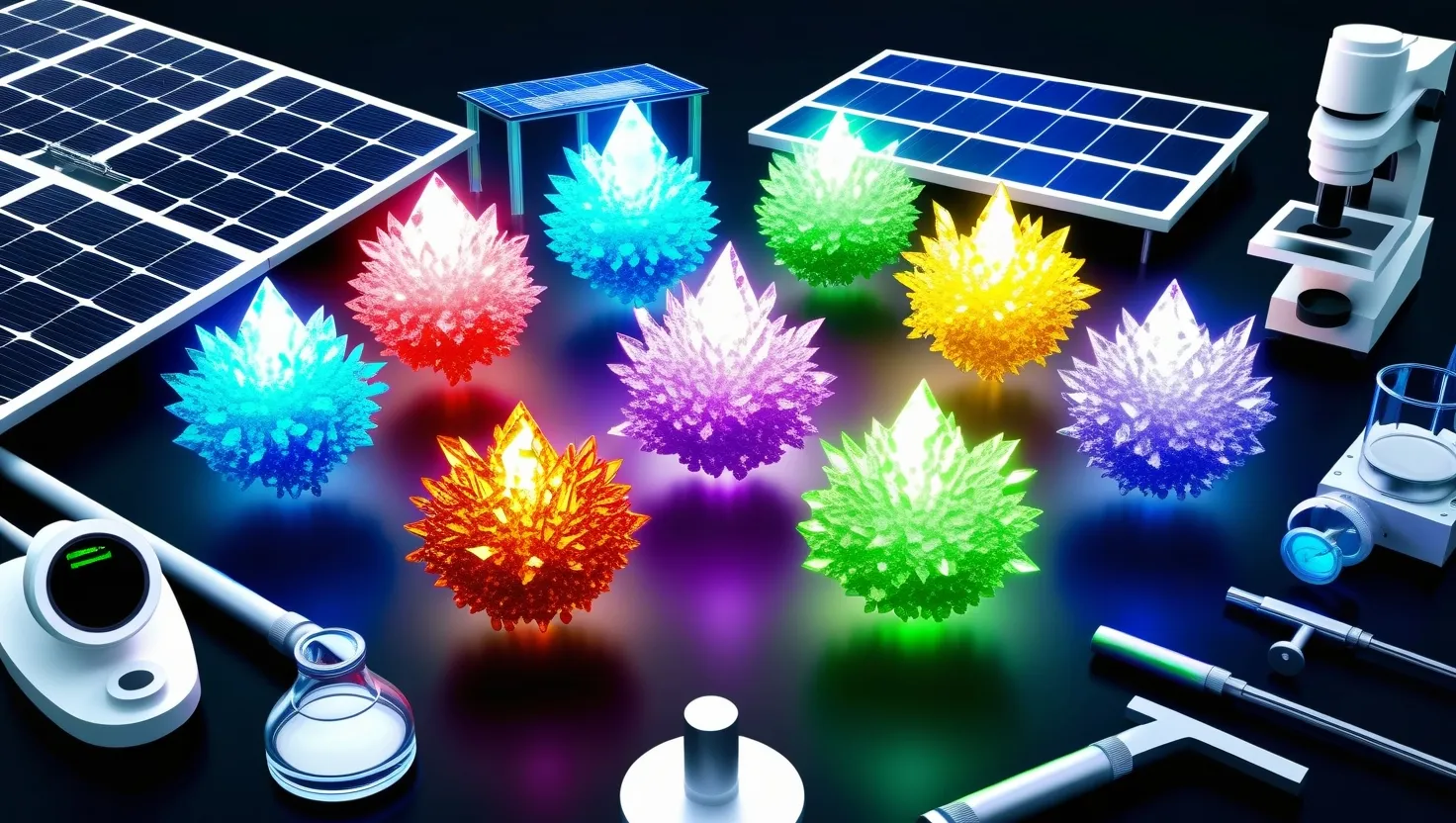In the realm of materials science, there exists a class of microscopic semiconductor particles that are revolutionizing various fields, from display technology and solar cells to medical imaging and beyond. These tiny wonders are known as quantum dots (QDs), and their unique optical and electronic properties make them incredibly versatile.
Quantum dots are nanoscale crystals, typically no larger than 10 nanometers in size. This minuscule size gives them characteristics that are distinctly different from their bulk material counterparts. One of the most fascinating aspects of QDs is their ability to emit light of specific wavelengths when excited by light or electricity. This property is highly tunable; by adjusting the size of the quantum dots, you can control the color of the light they emit. For instance, smaller QDs emit shorter wavelengths, resulting in colors like violet, blue, or green, while larger QDs produce longer wavelengths, yielding colors such as yellow, orange, or red.
The process of synthesizing quantum dots is crucial in determining their properties and applications. Various methods, including high-temperature coordinated solvents-based synthesis and top-down approaches like electron beam lithography, are used to create these nanoparticles. The size of the QDs, which can be controlled during synthesis, is a key factor in their optical and electronic characteristics. For example, the reaction time during synthesis can influence the size of the QDs, with longer reaction times generally resulting in larger particles.
One of the most promising applications of quantum dots is in the field of bioimaging. Here, their high luminescence and narrow emission properties make them ideal for in vitro and in vivo imaging. These tiny particles can be used to diagnose diseases, understand embryogenesis, and track lymphocyte immunology. In medical research, QDs are employed in fluorescence resonance energy transfer (FRET), gene technology, and fluorescent labeling, allowing scientists to visualize cellular processes with unprecedented clarity.
In the realm of energy, quantum dots are making significant contributions. They are being used to enhance the efficiency of photovoltaic devices, such as solar cells. The tunable absorption spectrum and high extinction coefficient of QDs make them excellent for light harvesting, which is beneficial for improving the performance of silicon photovoltaic cells and reducing costs. This could lead to more efficient and cost-effective solar energy solutions, a critical area of research as the world shifts towards renewable energy sources.
Display technology is another area where quantum dots are leaving a mark. Their unique optical properties make them perfect for light-emitting diodes (LEDs) and display devices. Quantum dot light-emitting diodes (QLEDs) offer more accurate and vibrant colors compared to traditional LEDs, enhancing the viewing experience in TVs, smartphones, and other display devices. The narrow emission spectra of QDs allow for precise color control, resulting in displays that are not only brighter but also more energy-efficient.
Beyond these well-known applications, quantum dots are also being explored for their potential in environmental and biomedical sensing. For example, certain types of QDs can detect pollutants in water, such as heavy metals and organic compounds. These nanoparticles can be functionalized to bind specifically to target molecules, making them highly sensitive and selective sensors. This capability is crucial for monitoring water quality and detecting environmental pollutants.
In the fight against cancer, quantum dots are proving to be valuable tools. They can be designed to target and image cancer cells with high precision. By conjugating QDs with magnetic particles or other targeting agents, researchers can create multifunctional nanoprobes that not only image tumors but also deliver drugs directly to the cancer site. This targeted approach can significantly improve the efficacy of cancer treatments while reducing side effects.
The surface structure of quantum dots also plays a critical role in their applications. The high surface-to-volume ratio of these nanoparticles influences their optical characteristics, such as photoluminescence excitation and quantum efficiency. This property allows for enhanced or reduced transfer rates of photo-generated charge carriers, making QDs highly efficient in various electronic and optical devices.
In addition to their individual applications, quantum dots can be combined with other materials to create novel composites. Alloyed quantum dots, for instance, are made from multiple materials mixed homogeneously, imparting new properties that are distinct from the original materials. These alloyed QDs can improve optical and electronic properties, making them more effective in a range of applications.
The future of quantum dots looks incredibly promising. As research continues to advance, we can expect to see these tiny particles integrated into even more innovative technologies. From improving the efficiency of solar cells and LEDs to enhancing medical imaging and environmental sensing, quantum dots are pushing the boundaries of what is possible in materials science.
In conclusion, quantum dots represent a fascinating intersection of nanotechnology and materials science, offering a wide array of applications that are transforming various fields. Their unique properties, tunable characteristics, and versatility make them an exciting area of research and development. As we continue to explore and harness the potential of these microscopic semiconductor particles, we can anticipate significant advancements in energy efficiency, medical diagnostics, and environmental monitoring, among other areas. The tiny size of quantum dots belies their enormous potential to shape the future of technology and improve our world in meaningful ways.






